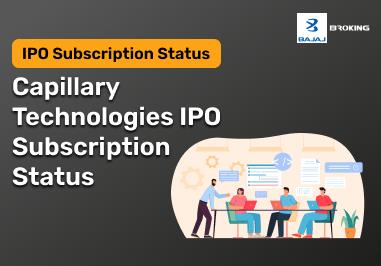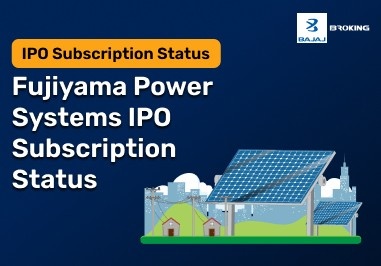Patel Engineering – Key Highlights
Mission & Vision
Patel Engineering’s mission is to deliver reliable and sustainable infrastructure solutions that positively impact society. The company envisions becoming a trusted infrastructure partner, recognised for technical innovation, engineering quality, and environmental stewardship. It is focused on expanding its footprint in strategic sectors such as irrigation, tunnel and renewable energy projects. Commitment to community development, stakeholder value and digital project execution is integral to its vision. Patel invests in modern construction technologies, automation and safety protocols. It aims to foster long-term relationships with clients and communities, while delivering projects with minimal environmental impact. The firm’s strategic priorities include financial strength, project excellence, and governance transparency.
Milestones and Achievements
Patel Engineering has successfully completed high-value projects such as hydroelectric dams, large-scale irrigation canals, and tunnels. Notable achievements include pioneering build-operate-transfer (BOT) infrastructure projects. The company has earned several quality and safety certifications and received awards for its project management and environmental practices. Its entry into renewable energy construction underlines its diversification strategy. Over the years, it has built a strong order pipeline and executed contracts with major government and private-sector clients. These milestones reflect Patel’s engineering rigour and ability to deliver complex infrastructure solutions on time and within budget, reinforcing its standing in the mid-cap construction ecosystem.
Recent Developments or News
Patel Engineering has recently secured significant contracts in irrigation and tunnel infrastructure, enhancing its project backlog and revenue visibility. It completed key stages of a dam and tunnel project, improving quarterly execution metrics. The firm also concluded a meeting on 26th August 2025 that issued and allotted 9,000 (Nine Thousand) Senior, Secured, Rated, Listed and Transferable Non-Convertible Debentures. Simultaneously, it upgraded its project monitoring systems with digital tools to improve delivery timelines and safety outcomes. These strategic measures aim to address cost controls and improve liquidity. The recent developments highlight strong execution momentum, disciplined governance, and proactive risk mitigation. By focusing on technology adoption and backlog growth, Patel is enhancing its capacity to deliver complex infrastructure and navigate sector cyclicality effectively.
Financial Overview of Patel Engineering
Revenue and Profit Trends
Patel Engineering’s revenue is driven by contract execution across diverse infrastructure verticals such as irrigation, dams, tunnels, and hydropower projects. Yearly revenue has shown gradual growth correlated with project milestones. Profitability, however, has remained modest because of project execution costs, interest expenses, and working capital management. Although EBITDA has improved slightly, net profits have fluctuated. The company’s shift toward efficient cost control and faster billing cycles aims to stabilise margins. Cash flow from operations is improving as projects mature. Revenue performance represents project scale, while profit trends emphasise the capital-intensive and cash-cycle nature of the infrastructure sector. Improved collections and cost absorption are critical to future earnings stability.
Key Financial Ratios
Key financial ratios reflect Patel’s operational leverage and project financing model. The total debt has moved from ₹1,603Cr as of 31st March 2025 to ₹1,527Cr as of 30th June 2025. Interest coverage is improving with margin rationalisation but remains sensitive to cost fluctuations. Return on capital employed (ROCE) is moderate, reflecting capital deployed in long-cycle projects. The company trades at a premium P/E ratio, indicating investor optimism around the execution turnaround. Liquidity ratios are improving, supported by recent equity infusion via rights issue. These financial metrics highlight ongoing efforts to balance growth ambitions with the need to optimise capital structure and enhance profitability. Addressing leverage and improving returns will be critical to strengthening investor confidence.
Recent Quarterly/Annual Results
In its recent quarterly results, Patel Engineering reported increased revenue and marginal profits driven by the completion of large project tranches and better realisation of work-in-progress. Sequential margin improvement was aided by cost discipline and optimised billing. The annual results showed improved EBITDA margin, reflecting efficiency enhancement, though net profit remained constrained due to interest costs. Management commentary emphasised commitment to cash collection, execution discipline, and backlog conversion as key priorities. These results underline a gradual shift from growth at scale to growth with margin discipline and liquidity enhancement in execution-focused infrastructure companies.
Patel Engineering Share Price Performance
Historical Share Price Trends
Patel Engineering’s share price has been cyclical in nature, reflecting performance in contract awards, project execution, and macroeconomic conditions. Historically, the stock has seen rallies following major order wins and milestones. However, volatility spikes occurred during project cost escalations or capital-raising events. Overall, the share price mirrors the infrastructure sector’s sentiment and the company’s execution track record. In recent quarters, improved recognition of contracting discipline and backlog growth has lent stability. Long-term investors view the company as a turnaround candidate, provided there is consistent delivery and backlog replenishment. Short-term price actions continue to respond to quarterly results and infrastructure spending.
52‑Week High/Low
Patel Engineering's share price over the past year reached highs following order wins and operational updates. It also touched lows when execution or financing concerns emerged. The current price remains in the mid-range, suggesting a consolidation phase post backlog growth and execution improvements. The wide range highlights investor sensitivity to project developments, government infrastructure pace, and financing conditions. These levels act as resistance and support indicators, important for traders and investors tracking cyclical shifts in the infrastructure space. Re-rating is expected as free cash flows stabilise and leverage reduces.
Pros & Cons of Patel Engineering
Pros
Strong technical credentials in engineering, with a diversified project portfolio.
Recent order wins enhance revenue visibility.
Transition toward digital execution improves delivery efficiency.
Cons
Debt levels and interest obligations remain a drag on net profit.
Profitability is highly sensitive to execution cost and billing timing.
Cash flow volatility is inherent in long-cycle infrastructure projects.
Market performance depends heavily on government infrastructure spending and regulatory cycles.
Patel Engineering Stock Fundamentals
P/E Ratio, EPS, ROE, etc.
Patel Engineering’s P/E ratio suggests investor optimism regarding future execution improvements. EPS growth has been modest due to finance costs. Return on equity (ROE) and capital employed (ROCE) remain moderate, reflecting capital tied up in projects with long gestation periods. These metrics highlight a company in transition, moving from cash-intensive execution to healthier margins. Continued execution consistency, cost control, and targeted capacity utilisation improvements will be key to unlocking stronger fundamentals. The current fundamentals are poised for enhancement, contingent upon improved working capital and capital-efficient growth.
Competitors of Patel Engineering
Peer Comparison
Patel Engineering operates in a competitive environment among large and mid-cap engineering firms, focusing on hydropower, tunnel and irrigation projects. Compared to peers, it benefits from niche expertise in dam projects and BOT structures. While some peers may have larger balance sheets or diversified into PPP model, Patel’s strength lies in steady backlog execution and focus on operational excellence. Relative valuation is similar to other larger and mid-cap players but reflects expectations of an execution turnaround. Investors often benchmark its metrics against peers such as HCC, NCC, L&T and Megha Engineeing & Infrastructure Ltd.
Market Positioning
The company is positioned as a competent EPC contractor with strong capabilities in irrigation, tunnelling, hydroelectric, and urban infrastructure. Its focus on digital monitoring, quality certification and backward integration enhances execution reliability. Patel aims to leverage domestic government infrastructure programmes and national project opportunities. While it remains smaller than large EPC majors, its targeted project focus and technological emphasis enable competitive positioning in its niche. The firm’s reputation for successful execution supports its bid pipeline and overall market confidence.
Future Outlook for Patel Engineering
Growth Opportunities
Patel Engineering’s growth strategy focuses on increasing order inflows in irrigation, tunnel and renewable energy projects. Expanding into BOT or PPP models and geographic diversification are key priorities. The shift toward digital construction methodologies and lean execution is expected to improve margins. Infrastructure development in emerging regions and government priorities in irrigation and transport offer a pipeline of opportunities. Backlog visibility, execution efficiency and capital structure alignment will be central to growth momentum.
Risks and Challenges
Project execution delays, cost overruns and funding constraints are principal risks in the infrastructure sector. Changes in government infrastructure spending or regulatory approvals could delay contract awards. Interest rate fluctuations may further strain financial expenses. Competition from larger firms could limit project scale. Additionally, working capital mismanagement can worsen cash flow cycles. To mitigate these, Patel Engineering must maintain tight project controls, prudent cost management, stable financing strategies and governance adherence.
How to Track Patel Engineering’s Share Price?
You can follow Patel Engineering via NSE (PATELENG) or BSE (500174) through your brokerage app, financial news sites, or the Bajaj Broking dashboard. Use real-time quotes, interactive charts and corporate alerts for order wins, execution milestones or results. Key market data includes backlog size, project execution rates and financial quarterly performance. Price alerts tied to contract decisions or results help with timely tracking. Monitoring infrastructure spending trends and sector indices also provides context to the share’s price movement.















